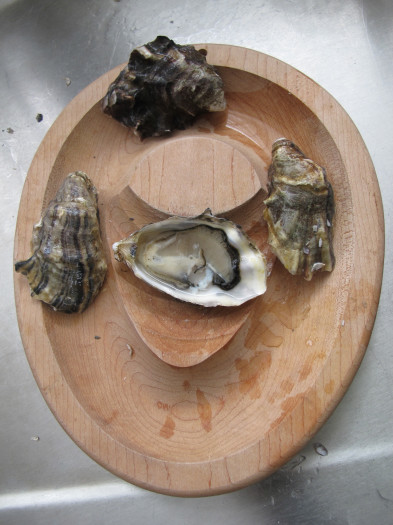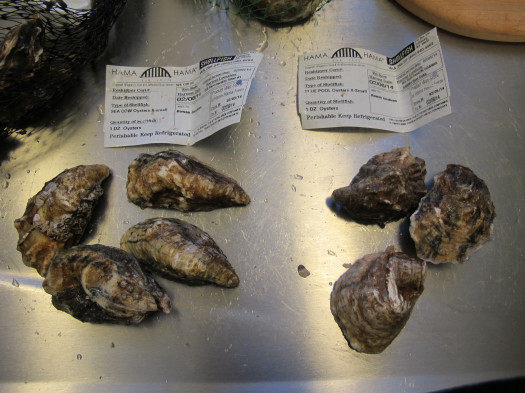Sea Cow
Feb 18, 2014

Hama Hama is an amazing oyster company based in an amazing place: The Hamma Hamma river delta in Washington State’s Hood Canal, on the edge of the Olympic Peninsula. They’ve long been known for their beach-grown Hama Hamas, the flagship Hood Canal oyster, and three years ago they came out with Blue Pools, essentially tumbled Hama Hamas, which immediately became revered on both coasts for their crisp, melon-rind brine and their firm crunch. (The company has an excellent primer on oyster tumbling here.)
Recently, Hama Hama released a new tumbled oyster that comes from not just a different spot but an entirely different watershed: Hammersley Inlet in South Puget Sound. Being much farther from the ocean, and much more intertwined with the flats and algal communities of South Sound, they have a completely different profile from the Blue Pools, and sampling the two side by side is an ideal study in the seential natures of Hood Canal and South Sound. Sea Cows have a moderate brine and a decidedly creamy richness, and instead of the sharp cucurbit finish of Blue Pools, they are deep and funky. “Earthy” is the word Hama Hama uses to describe them, which is true, but what came to my mind was wild mushrooms (especially boletes) and liver. Think of them as the foie gras of the coast.

Sea Cows (left) and Blue Pools (right)
The oysters are named for Steller’s Sea Cow, a massive manatee (we’re talking 30 feet long and 10 tons, a whale of a manatee!) that once ranged across the Pacific, munching on kelp. Being huge, slow, tame, tasty, and useful, it did not far well once ancient humans got their sea legs under them. The last sea cow went down sometime in the latter 1700s. Let’s hope we learned our lesson and do better with oyster preservation.
« PREVIOUS: The Ultimate Oyster Carrier
» NEXT: West Coast Winemaker Dinners
 Recent Posts
Recent Posts
